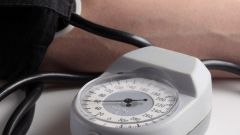Instruction
1
The studies of diurnal blood pressure was found that fluctuations in healthy individuals with age 20-60 l, can be not less than 20% of its normal value. In the daytime it increases to 20-30 mm Hg.St, and at night is reduced by 10-20 mm of mercury.St. Exceeding these levels is evidence of a developing pathology. Diurnal variation in blood pressure due to the circadian rhythm of cyclical fluctuations in the intensity of biological processes associated with the change of day and night.
2
The majority of people adheres to a regular routine, so the appearance of the peak and decline of the circadian rhythm during the day is a predictable and natural phenomenon. The rhythm in blood pressure has two phases with the highest values of the day and a clear decrease in the sleep period. The lowest pressures observed in the interval from 0 to 4 hours. in the morning, then increasing its level before the awakening (5-6 hours). To 10-11 hours. the pressure reaches a more stable daily values. During the day 2 reveal pronounced peak enlarge: morning (9-10 hours.) and evening (about 19 hours).
3
Changing the pressure of a night associated with the stages of sleep. In particular, the pressure decrease of about 3 hours. the night is due to a deep phase, constituting 75-80% of total sleep time. In the 2nd half of the night in humans is dominated by superficial sleep combined with intermittent periods of waking up. The increase in pressure at this time is 5% of the average. The most pronounced increase in pressure from 4 hours to 10-11 hours. It is indicated for healthy individuals, however, too high values are a sign of hypertension. The period is characterized by increased physiological activity of the sympathetic nervous system, which is responsible for vasoconstriction and increased heart rate.
4
During the day there are also irregular changes in pressure which are accidental. They're influenced by external factors: the environmental conditions, the position of the body, the physical exercises, Smoking, individual characteristics of the organism (gender, age, personality type, family background, mood, etc.), food composition, consumption of salt, caffeine containing drinks (coffee, tea), alcohol. Irregular changes in blood pressure aimed at maintaining blood flow at a sufficient level.



